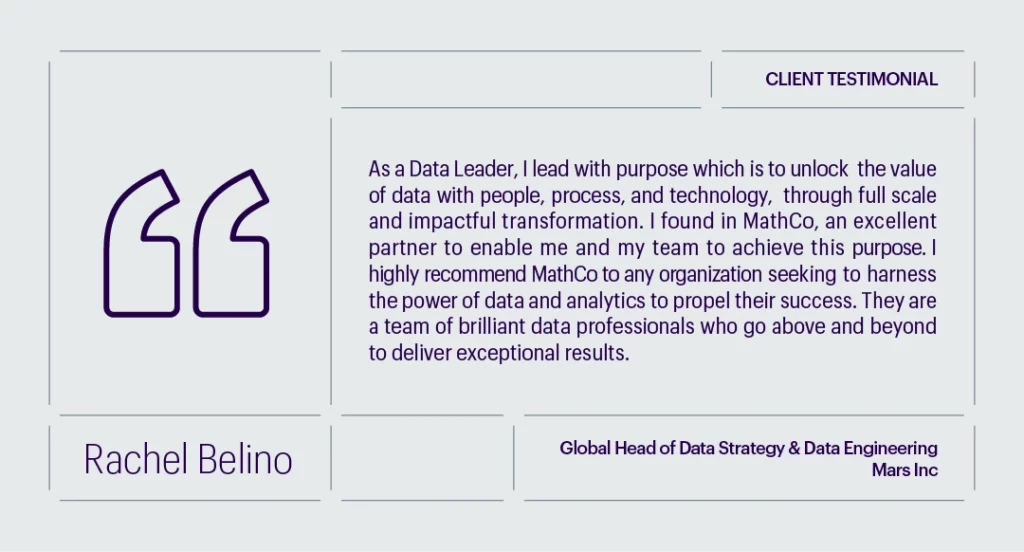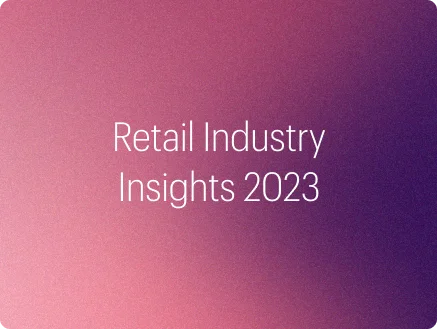The Consumer Packaged Goods (CPG) industry is currently undergoing a momentous digital transformation. This shift has been driven by the abundance of data and advanced analytics readily available at our fingertips. Over the past three years, CPG manufacturers have significantly increased their investments in digital technology. This surge in digital adoption has emphasized the importance of establishing an online presence, building omnichannel customer journeys, and embracing direct-to-consumer (DTC) brands like never before.
Due to its ever-evolving nature, the CPG industry can be an extremely challenging domain to achieve sustainable success. The recent pandemic outbreak was the perfect example of the industry’s dynamic makeup. It sparked a massive change in consumer preferences, resulting in increased competition, supply chain complexities, and the rise of e-commerce. And to tackle these challenges, global businesses embraced digital transformation at different organizational levels.
For CPG companies, digital transformation offers a transformative solution to unlock new opportunities and ensure sustainable growth and efficiency. At its core, digital transformation in the CPG industry revolves around leveraging data and technology to gain deeper insights into consumer behavior, preferences, and trends. By harnessing the power of data analytics, artificial intelligence (AI), machine learning (ML), and the Internet of Things (IoT), companies can make more informed decisions, optimize supply chains, and create personalized experiences for consumers.
Digital transformation in CPG
One of the key drivers behind the CPG industry’s transformation is the widespread adoption of the Internet of Things (IoT). It has led to an exponential growth in data generation. This abundance of data allows companies to make faster, more accurate decisions in order to stay competitive. CPG companies are increasingly investing in analytics technologies to gain valuable insights from this data and to make data-driven decisions.
Based on a survey conducted by MIT SMR, about 48% of retail and CPG organizations are looking to invest in customer experience technologies over the next two years [1]. One technology that is forecasted to play a huge role in CPG is predictive analytics. According to Statista, the global predictive analytics market is forecasted to grow to USD 41.52 billion by 2028 [2]. By leveraging predictive analytics, CPG companies can analyze consumer behavior, manage supply chain operations, etc.
With this explosion of big data, another aspect that CPGs must consider is data integration. CPG companies can create a Single Source of Truth (SSOT) by integrating different data sources, resulting in increased data visibility, access, and accuracy across different organizational levels. This data aggregation can help CPGs gain a comprehensive understanding of their consumers.
MARS & MathCo partnership
One standout example of successful digital transformation in the CPG industry is the collaboration between MathCo and Mars Inc. MathCo has been instrumental in driving Mars Inc.’s digital transformation journey across various business functions. A notable focus has been on setting up solid data foundations and optimizing business processes by adopting the latest digital trends and practices.
MathCo was pivotal in centralizing and transforming data into actionable insights through descriptive and predictive analytics. Sreeharsha Alagani, Associate Principal at MathCo, and Rachel Belino, Global Head of Data Strategy & Data Engineering at Mars, co-presented their successful partnership at the Data and AI Summit. This partnership transformed the business from a people-dependent function to a data-driven powerhouse.

Industry trends and challenges
Before embarking on the digital transformation journey, CPG companies must understand the industry trends and challenges they might face. According to industry experts and leaders from the Data and AI Summit 2023, one of the most prominent industry trends is the rapid adoption of machine learning and Large Language Models (LLMs) among companies. Organizations are investing heavily in Natural Language Processing (NLP) use cases to gain valuable insights from unstructured data and enhance customer experiences.
Furthermore, there has been a surge in the deployment of data integration products. It reflects the CPG industry’s commitment to data science and machine learning initiatives. It also highlights the growing popularity of the Lakehouse architecture for efficient data warehousing and analysis.
The CPG industry has its fair share of challenges amid these encouraging trends and developments. One critical roadblock is the legacy infrastructure on which the core systems have been built over the years. These obsolete systems are not optimized to handle the reams of data that are generated today, leading to compatibility and scalability concerns. Moreover, the scattered nature of data across different departments and systems creates data silos. This fragmented data landscape hinders the holistic view necessary for effective analysis and decision-making.
The intricacies associated with the supply chain are another obstacle for CPG companies. The CPG supply chain involves multiple stakeholders, such as manufacturers, distributors, and retailers. Coordination and synchronization of digital efforts and finding solutions that align flawlessly with the entire supply chain can be daunting.
However, with the advent of cutting-edge technology, CPG companies have numerous tools and technological solutions to overcome these challenges. With the right approach, organizational culture, and technological investment, CPGs can establish a robust data foundation and develop revenue-generating business solutions.
Conclusion
The CPG industry’s digital transformation journey is a testament to the power of data and analytics. By embracing cutting-edge technologies and fostering data-centric ecosystems at scale, organizations can stay ahead of the competition and make informed decisions. As a partner in driving this transformation, MathCo continues to empower businesses with the tools and strategies necessary to thrive in the data-driven era. Together, we are shaping the future of the CPG industry and beyond.
Bibliography
1. Connections, MIT SMR. “MIT SMR Connections: Infographic: Retail and CPG Customer Experience: Trends, Tech, and Takeaways.” MIT Sloan Management Review, October 25, 2022. https://sloanreview.mit.edu/mitsmr-connections/retail-and-cpg-customer-experience-trends-tech-and-takeaways/.
2. Vailshery, Lionel Sujay. “Global Predictive Analytics Market Size 2028.” Statista, March 24, 2023. https://www.statista.com/statistics/1286871/predictive-analytics-market-size/.


